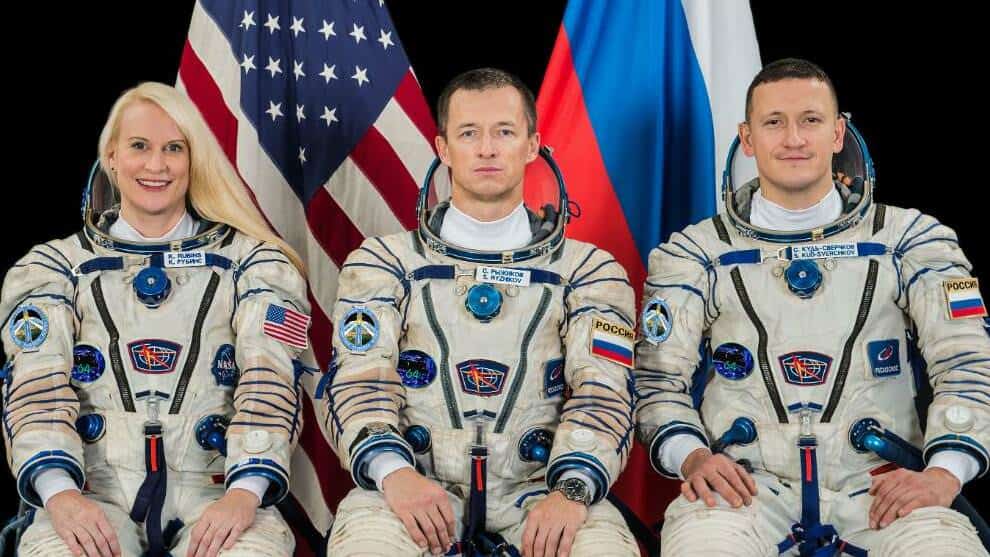Ilon Musk, the American entrepreneur and billionaire, has revealed the objectives that his private space company, SpaceX, is working towards. He shared this information on the social media platform X (formerly known as Twitter).
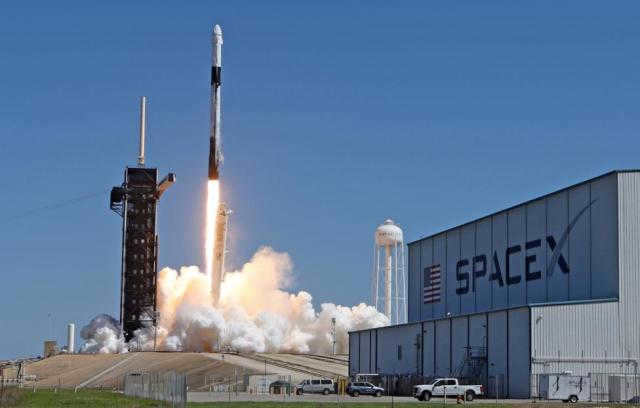
2025 is the year when the first launch of the Soyuz-5 rocket is planned
The initial launch of the Soyuz-5 rocket, currently under development by the Progress Rocket and Space Center, is set to take place on December 24, 2025. This important update was shared with the Russian Prime Minister, Mikhail Mishustin, during his visit to the Progress RSC in Samara on August 17.
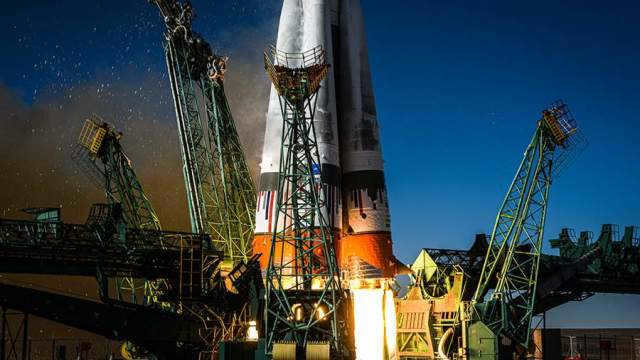
Space Satellites Vulnerable to Hackers, Experts Warn
Lack of Basic Security Systems
Space satellites are at risk of being remotely hijacked by hackers due to their lack of basic security systems, according to experts. The absence of adequate protective measures makes these spacecraft defenseless against cybercriminals. Izvestia’s article delves into the reasons behind the vulnerability of satellites in orbit and the potential consequences.
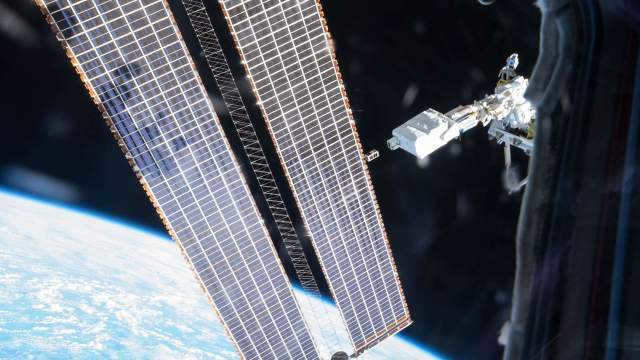
RSC Energia and Gazprom companies have recently entered into a partnership to focus on the advancement of technology at ROS
Roscosmos has highlighted that the Russian orbital station will enable the establishment of data processing, storage, and transmission capabilities for satellite communication, as well as the acquisition of supplementary Earth observation data.
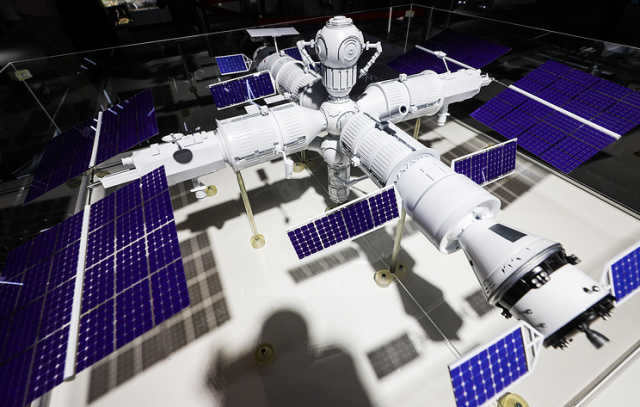
The Luna-25 station captures its inaugural image of the lunar surface
"Roscosmos": Luna-25 captures the first-ever image of the lunar surface
According to a statement released by Roscosmos on August 17, the unmanned Luna-25 spacecraft has successfully captured the very first image of the lunar surface using the advanced television cameras of the STS-L complex.
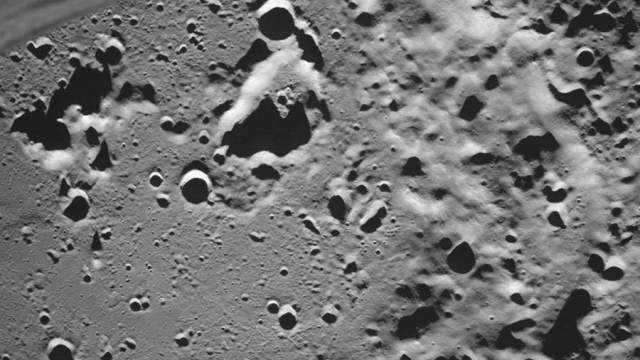
Revolutionary Innovation: Russia’s Creation of an Endless Source of Energy for Satellites
How a cutting-edge technology for constellations in low Earth orbit will revolutionize global Internet connectivity
A team of Russian engineers is currently developing an advanced propulsion system for satellites that are specifically designed to operate in low orbits. These satellites, positioned at an altitude of approximately 200 kilometers, still encounter remnants of the Earth’s atmosphere which create drag. To overcome this challenge, the spacecraft’s engine needs to operate continuously, effectively creating a perpetual motion machine.
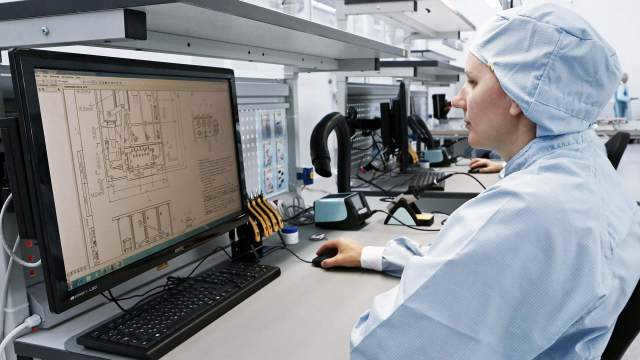
"Roscosmos" confirms the successful launch of the "Luna-25"
According to a statement from Roscosmos on Thursday, the Luna-25 automatic interplanetary station has entered the Earth’s natural satellite orbit and is currently undergoing a normal flight.
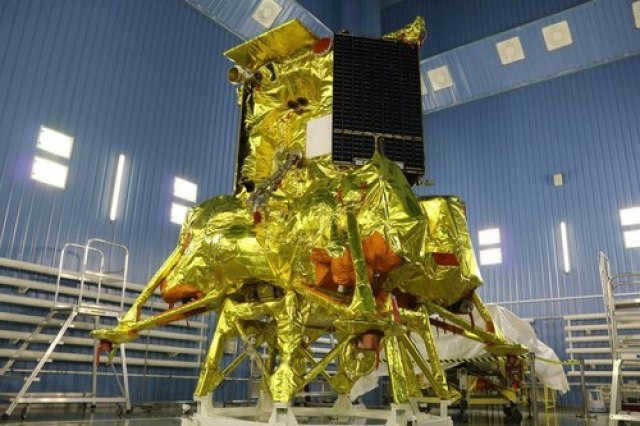
Iran Initiates Development of New Satellites Pars-2 and Pars-3
The primary purpose of these satellites is Earth remote sensing.
The Iranian space agency has commenced the development process of the upcoming satellites Pars-2 and Pars-3, as stated by the organization’s director, Hassan Salari, according to the report from Tasnim News Agency.
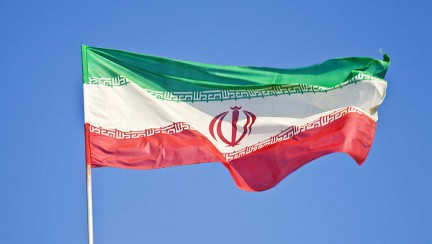
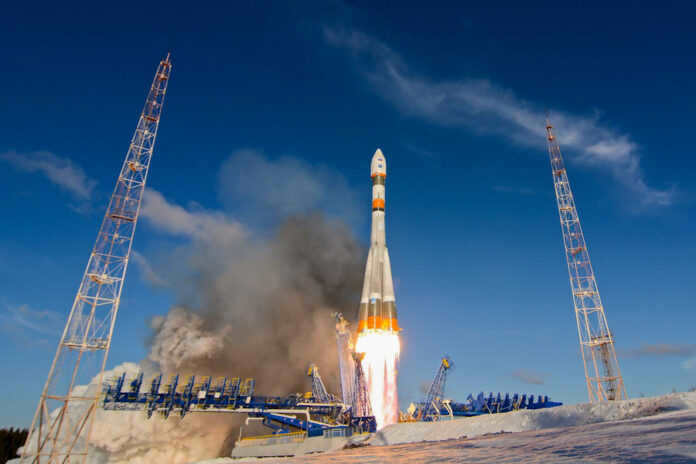
The satellite completed 1440 orbits around the Earth (approximately 60 million kilometers) during its 92-day journey in space, which ended on January 4, 1958. However, it eventually started to decelerate and ultimately burned up upon re-entry into the Earth’s atmosphere.
In that same year, the Soviet Union successfully launched another satellite, this time with a canine passenger named Laika. Unfortunately, the experiment was not a success as the device’s large surface area caused it to overheat, resulting in the tragic death of the dog during its initial orbits around the Earth.
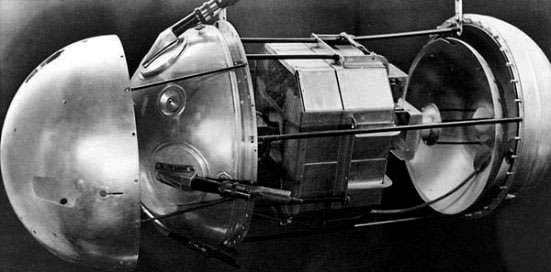
2. The pioneers of outer space
At 09:07 Moscow time on April 12, 1961, the Vostok rocket was launched, marking the historic moment when a manned spacecraft was successfully sent into outer space for the first time. On board the spacecraft was Yuri Gagarin, a 27-year-old Soviet military pilot, who became the first person in history to experience space travel.
During his time in orbit, Gagarin documented his sensations, provided updates on the condition of the spacecraft, and conducted various experiments, including eating, drinking, and writing with a pencil. However, he did not have control over the spacecraft as it was uncertain how the human mind would react in space. To ensure safety, a manual control system was implemented, requiring the input of a code written inside an envelope to unlock the controls.
After completing one full revolution around the Earth, Yuri Gagarin safely landed in the Saratov region. The entire flight lasted 1 hour and 48 minutes.
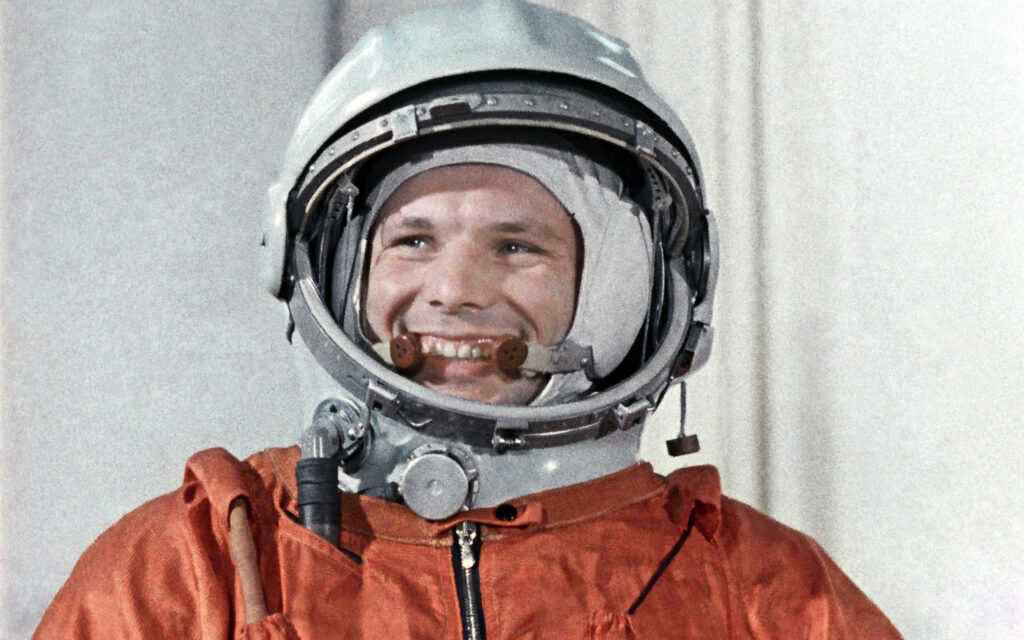
The Soviet pilot Valentina Tereshkova became the first woman to conquer space. At 12:30 a.m. Moscow time on June 16, 1963, she successfully launched the Vostok-6 spacecraft into orbit around the planet.
Prior to the launch, the mission was kept classified. On the day of the flight, Tereshkova informed her family that she was going to participate in a parachuting competition. Valentina’s mother learned about her daughter’s remarkable achievement through a radio broadcast while she was still orbiting the Earth.
The “Vostok-6” spacecraft spent nearly three days in space, precisely 70 hours and 50 minutes, completing 48 revolutions around the Earth. During this time, Valentina diligently maintained a logbook and captured photographs of the mesmerizing horizon.
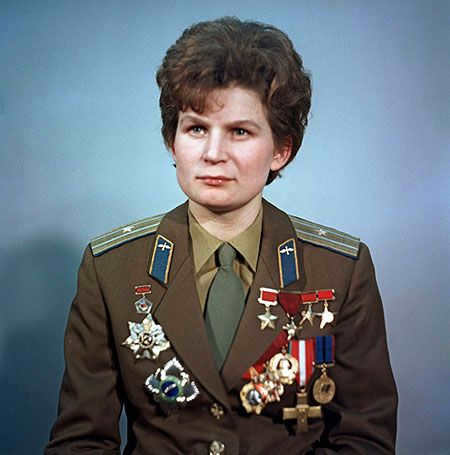

3.Russian Cosmonauts Currently in Space
On March 18, 1965, a historic event took place when two Soviet cosmonauts, Pavel Belyaev and Alexei Leonov, embarked on a mission aboard the Voskhod-2 spacecraft. It was during this mission that the first ever human spacewalk occurred, forever changing the course of space exploration.
Alexei Leonov bravely ventured outside the spacecraft, moving a remarkable distance of five meters away from the ship. He remained outside for an impressive duration of 12 minutes and 9 seconds, making history in the process.
However, the return to the spacecraft was not without its challenges. The spacesuit worn by Leonov had inflated due to the difference in pressure, making it incredibly difficult for him to move. The shell of the suit became rigid and bending it became a struggle. As a result, the cosmonaut faced difficulties in re-entering the airlock.
Leonov’s resourcefulness saved the day as he successfully reduced the oxygen pressure inside the spacesuit, allowing him to squeeze back into the spacecraft. This was just one of the many problems encountered during the mission, which could have resulted in a tragic outcome in different circumstances.
Another life-threatening situation occurred when Leonov almost succumbed to depressurization while trying to re-enter the ship. The fluctuating pressure inside the spacecraft posed a potential risk of explosion, further complicating the mission.
On top of these challenges, the cosmonauts also faced issues with flight stabilization, leading to a landing in an inaccessible area covered in snowy taiga. Stranded for two days, the crew had to rely on their survival skills until rescue arrived.
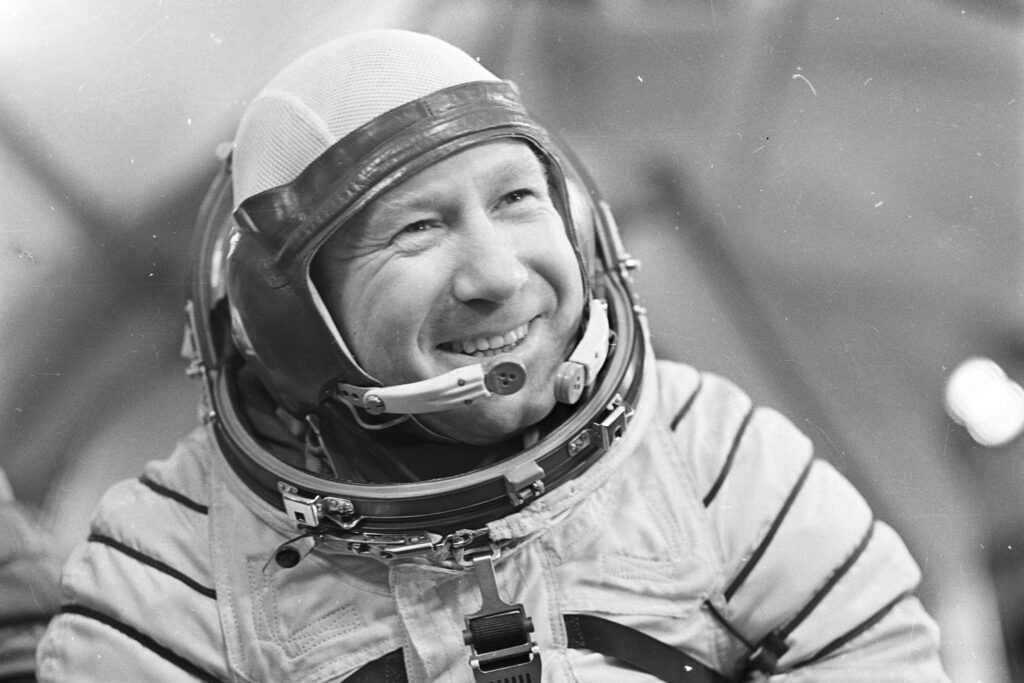
Svetlana Savitskaya made history by becoming the very first female astronaut to venture into outer space. During her mission, she spent over 3 hours outside the Salyut-7 orbital station, alongside cosmonaut Vladimir Dzhanibekov. Together, they tested a versatile handheld tool capable of cutting, welding, soldering, and spraying various metals.
Svetlana Savitskaya also achieved another remarkable milestone by becoming the first woman to embark on two separate space flights. Her first flight took place from August 19 to 27, 1982, serving as a cosmonaut-researcher aboard the Soyuz T-7 / Soyuz T-5 spacecraft and the Salyut-7 long-term orbital station. Her second flight occurred from July 17 to July 29, 1984, where she served as a flight engineer aboard the Soyuz T-12 spacecraft and the Salyut-7 station.
4. Notable Accomplishments in the Lunar Race
The Moon has consistently been a significant objective in both international and domestic space exploration. Here, we will highlight the major triumphs and achievements of our fellow countrymen in their pursuit:
On September 14, 1959, the Luna-2 spacecraft became the first in the world to successfully land on the surface of the Moon. Touching down in the Sea of Clarity region near the Aristide, Archimedes, and Autolycus craters, the spacecraft carried a pennant adorned with the coat of arms of the USSR. Inside the spherical Luna-2 container were various scientific measurement and radio equipment. The primary accomplishment of this lunar mission was the identification and direct measurement of the solar wind.
On September 15, 1968, the Probe-5 spacecraft took off. It gained worldwide fame as the pioneering spacecraft to complete a circumlunar flight and safely return to Earth. What made this mission even more remarkable was the presence of living organisms on board, including turtles, fruit flies, worms, plants, seeds, and bacteria. These brave creatures became the first to reach the lunar orbit, marking a significant milestone in space exploration.
Fast forward to November 17, 1970, when the Lunokhod-1 rover made its historic touchdown on the lunar surface. This remarkable vehicle wasted no time and immediately embarked on its mission. Over the course of eleven lunar days, equivalent to 10.5 Earth months, Lunokhod-1 covered an impressive distance of 10,540 meters. Along the way, it captured and transmitted 200 lunar panoramas and a staggering 20,000 photographs, providing invaluable insights into the Moon’s terrain and composition.
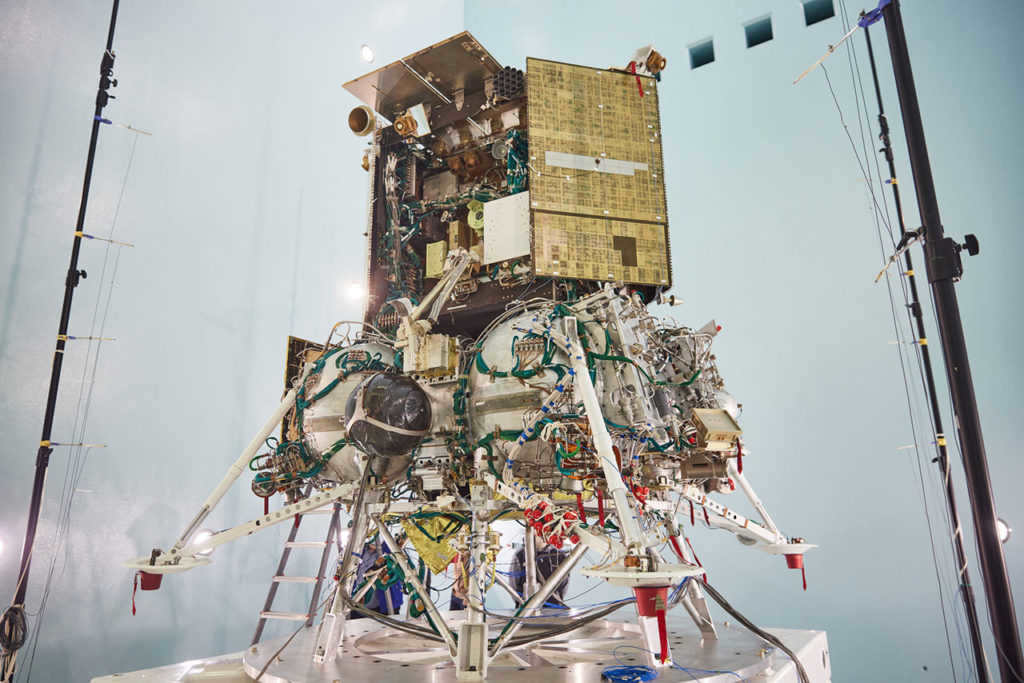
5. Sending and receiving information from a different celestial body
At 08:38 Moscow time on August 17, 1970, the automatic research station “Venera-7” was successfully launched. In December of that same year, the device completed its first landing on the surface of another planet and successfully transmitted data back to Earth. The station continued to send data for a total of fifty-three minutes, with twenty of those minutes being after it had landed on the surface of Venus.
This successful landing was not achieved on the first attempt. Prior to this, there were several launches of other vehicles that provided scientists with valuable data on temperature, pressure, wind speed, and other characteristics of the planet. This data was then used to improve the design of the “Venera-7” device.
The first attempted launch was in 1961, but the station remained in Earth orbit. The second vehicle, named “Venus 1,” passed within one hundred thousand kilometers of the planet, while the subsequent launches encountered various emergencies. In 1965, “Venus 3” became the first station to successfully reach the surface of another planet. “Venus 4,” launched in 1967, was crushed by the atmosphere but still managed to transmit data on the pressure, temperature, and composition of the planet’s atmosphere. Both “Venus 5” and “Venus 6” were also crushed, but they were able to transmit many pressure and temperature measurements before their demise.
A few years after the successful launch of “Venera-7,” both Venus 9 and Venus 10 successfully transmitted the first black-and-white panoramic images of the planet’s surface.
6.Landing on Mars
In May 1971, the exploration and conquest of Mars reached a significant milestone with the successful entry into orbit of the Mars-2 and Mars-3 spacecraft. These twin devices were launched almost simultaneously, with the purpose of mapping the fourth planet of the solar system and deploying landing modules for further exploration.
However, the Mars-2 landing module unfortunately crashed upon landing, while the Mars-3 module was able to successfully touch down on the surface. It began transmitting valuable data, but unfortunately, a dust storm interrupted the transmission after just 20 seconds. Despite this setback, the Mars-3 spacecraft made history by becoming the first device to reach the Red Planet and achieve a soft landing.
7. Autonomous Spacecraft Docking
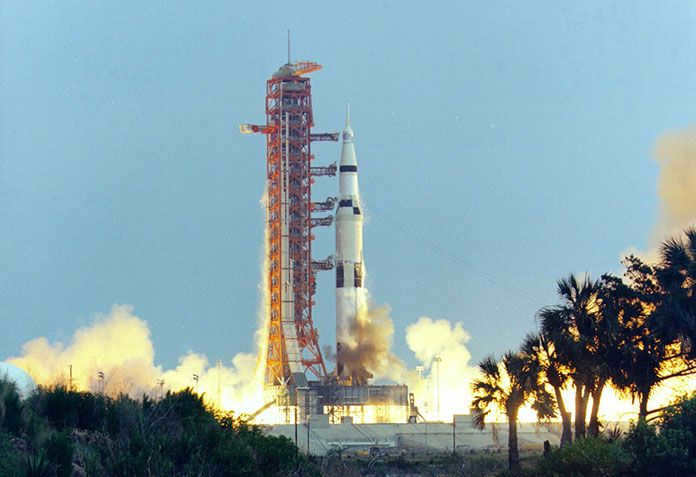
8. Delivery of Celestial Body Matter by a Robot
On September 24, 1970, the Luna-16, an automatic interplanetary station from the Soviet Union, successfully delivered 101.5 grams of lunar soil to Earth. This significant achievement was highly regarded by the global scientific community as it marked the first time in history that substance from another celestial body was brought to Earth not by a human, but by a robot.
The initial attempt by the Soviet probe, Luna-15, unfortunately ended in a crash upon landing. Subsequent attempts also faced challenges with the launch vehicles. However, it was the sixth Soviet probe, Luna-16, that finally achieved success.
After a successful landing, the Luna-16 station collected samples of lunar soil near the Sea of Plenty and placed them in a reentry vehicle. This vehicle safely returned to Earth on September 24, 1970, carrying the valuable lunar samples.
9. Orbital and multi-module stations.
Orbital and multi-module stations are a significant advancement in space exploration. These stations are made up of multiple modules that are connected in orbit around the Earth. The modules are designed to serve different purposes, such as living quarters, laboratories, and storage facilities.
One of the key advantages of orbital and multi-module stations is their versatility. Unlike single-module stations, which have limited capabilities, these stations can be expanded and modified to meet the needs of different missions. This makes them ideal for long-duration missions, such as space exploration or research.
Another advantage of these stations is their ability to support a larger crew. With multiple modules, there is more space for astronauts to live and work, allowing for longer missions and more complex experiments. This also enables greater collaboration between different countries and organizations, as there is room for multiple astronauts from different nations to work together.
Additionally, these stations can serve as a stepping stone for further exploration. They can be used as a base for launching missions to the Moon, Mars, or other celestial bodies. By establishing a presence in orbit, astronauts can gain valuable experience and test out technologies that will be used in future missions.
In conclusion, orbital and multi-module stations are a crucial component of space exploration. Their versatility, ability to support larger crews, and potential for further exploration make them an important tool for scientists and astronauts alike.
“Salyut 1,” the world’s first long-term Earth orbital station, was launched into Earth orbit on April 19, 1971, by a launch vehicle. The station remained in orbit for 175 days, until October 11, 1971, and successfully demonstrated the feasibility of sustained controlled flight around the planet.
On February 20, 1986, the Soviet orbital station MIR began its orbit, becoming the world’s first multi-modular station. MIR, considered one of the most groundbreaking projects of Soviet space exploration, replaced the Salyut orbital stations. Its primary purpose was to conduct long-term scientific and technical experiments, as well as research on the effects of space on the human body. The station operated until June 16, 2000, accumulating a total of 5511 days in space (with 4594 days spent with a crew on board) and completing 86,331 revolutions around the planet. Over 23,000 experiments were conducted on the station, and it hosted 104 cosmonauts from 12 different countries.
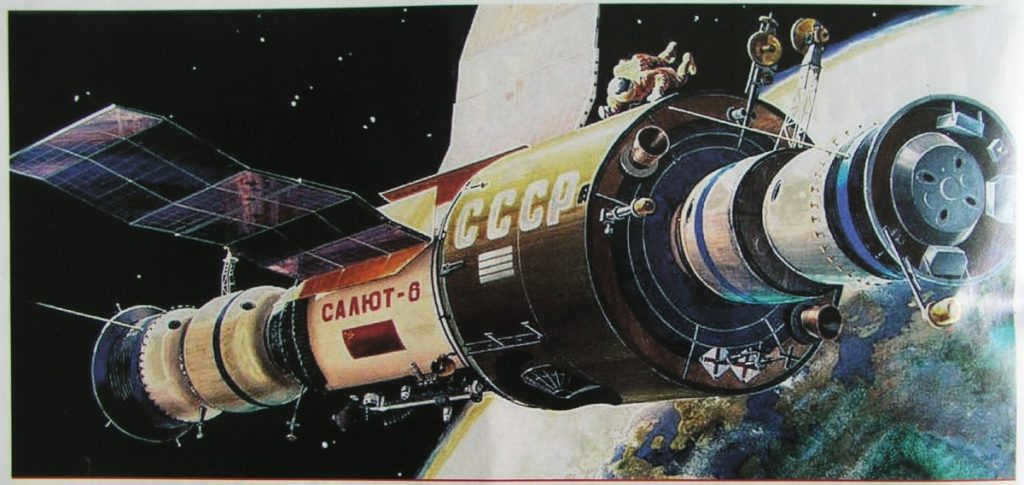
10. The GLONASS system
There are currently two global navigation satellite systems operating worldwide – the American GPS and the Russian GLONASS. The GLONASS system allows for location determination with an impressive accuracy of up to 2 meters and is primarily intended for use within Russia.
The Global Navigation Satellite System (GLONASS) is a satellite navigation system developed by Russia, with the goal of providing navigation and timing services to an unlimited number of users on land, sea, air, and in space.
There are currently 24 spacecraft in orbit, ensuring continuous operation of the system. The GLONASS project is constantly being updated and its accuracy is continuously improving. The State Corporation “Roscosmos” and various Russian ministries and agencies, including the Ministry of Defense, Ministry of Internal Affairs, Rostekhnadzor, Ministry of Transport, Rosreestr, Ministry of Industry and Trade, Rosstandart, Rosaviation, Rosmorrechflot, and FANO, are all involved in the ongoing development and maintenance of the system.
The record for the longest duration in space is held by Valery Polyakov, a Russian cosmonaut who is also a trained doctor. He spent a remarkable 437 days and 18 hours aboard the Mir orbital station, setting a new standard for the length of time spent on a single mission. Polyakov’s journey began on January 8, 1994 and lasted until March 22, 1995.
Polyakov had the opportunity to travel to orbit on two separate occasions, and in both instances, his stays were longer than initially planned. During his first flight, he resided in space for over 240 days. In total, Polyakov has spent a staggering 678 days in orbit.
As a result of his successful mission, Polyakov was honored with the prestigious title of Hero of the Russian Federation on April 10, 1995.
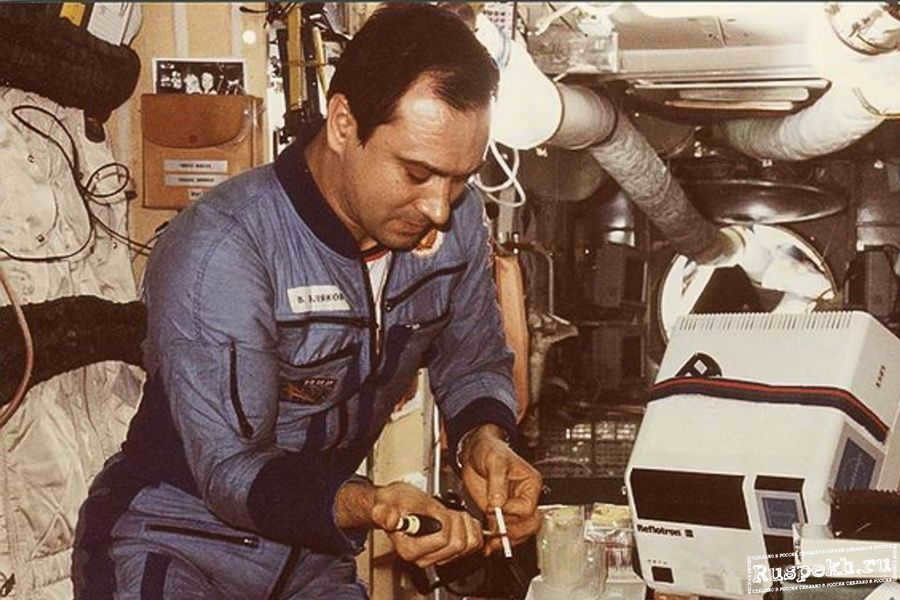
12. Rapid Launch to the International Space Station on April 4, 2019 by a Cargo Transport Ship
The “Progress MS-11” spacecraft successfully docked to the Pirs module of the International Space Station (ISS) at 17:22 Moscow time, setting a new record for the fastest docking in history. It only took 3 hours and 21 minutes from launch to docking, surpassing the previous record set by Progress MS-09, which took 3 hours and 40 minutes to reach the ISS after launching from Baikonur Cosmodrome.
Progress MS-11 delivered over 2.5 tons of various cargoes to the ISS. This includes more than 1.4 tons of dry cargo, 900 kg of fuel, 420 kg of water in Rodnik system tanks, as well as 47 kg of compressed air and oxygen in cylinders. The cargo bay also contains scientific equipment, food, clothing, medicines, and personal hygiene products for the crew members.
LOCATION: The park is situated in the Engels district, Saratov region, approximately 3 kilometers southeast of the village of Novaya Ternovka.
CONTACT: You can reach us at the following phone numbers: +7 (84527) 7-12-04, +7 (927) 277-12-04
OPERATING HOURS: From April 1 to October 1, the park area is open daily from 9:00 to 20:00. The information center operates from 9:00 to 20:00, with Mondays being the designated day off. Ticket offices are open from 9:00 to 19:30, also with Mondays as the day off. From October 1 to April 1, the park area is open daily from 9:00 to 18:00. The information center operates from 9:00 to 18:00, with Mondays as the designated day off. Ticket offices are open from 9:00 to 17:30, also with Mondays as the day off.
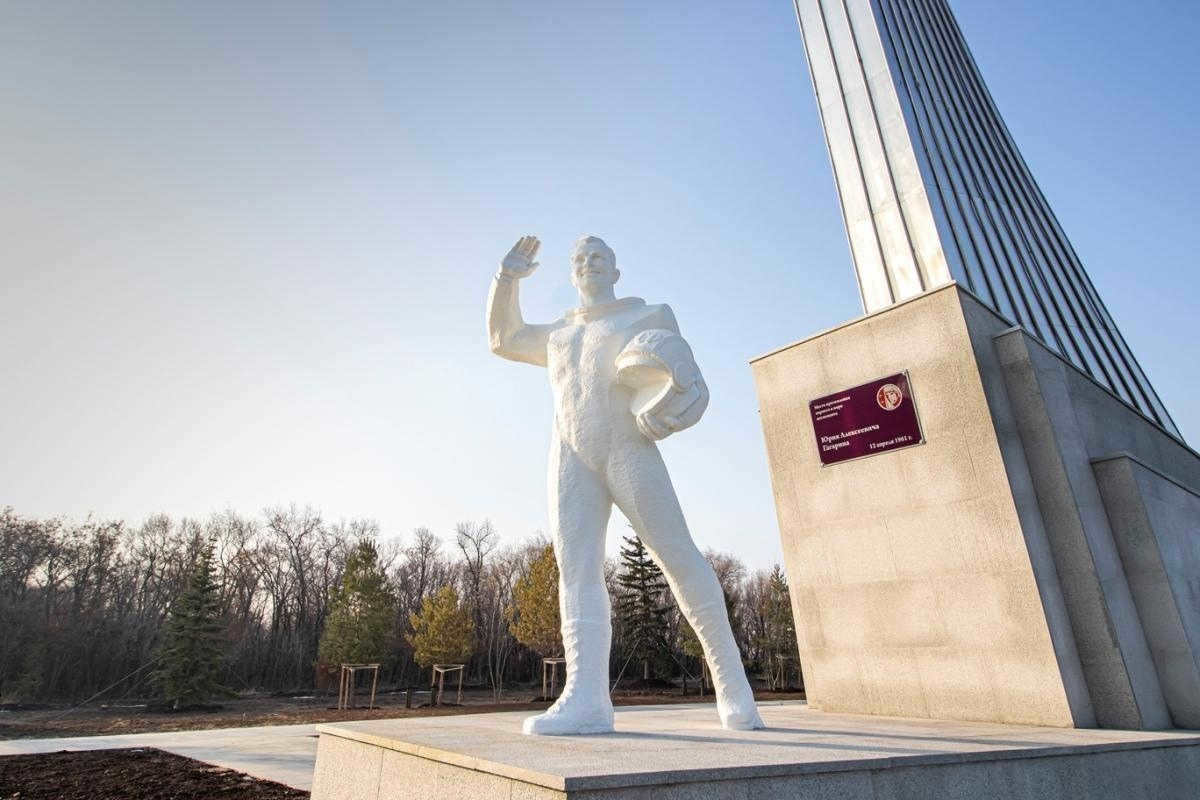
The Yuri Gagarin Space Conquerors Park is scheduled to open in 2021 in the Saratov region to commemorate the 60th anniversary of the historic flight of the world’s first cosmonaut. Yuri Alexeyevich Gagarin holds the distinction of being the pioneer who successfully ventured into outer space. The Saratov region holds a special significance in his life, as it was here that he pursued his education at the Saratov Industrial Technical School. Additionally, he became a member of the local aeroclub of DOSAAF of the USSR and experienced his first flight at the Dubki sports airfield (now known as the Gagarin Aeroclub). Furthermore, Saratov was the site where his spacecraft, “Vostok-1,” made its landing near the Volga river.
The concept of establishing a memorial complex arose following the visit of Vyacheslav Volodin and Valentina Tereshkova to the “Gagarin Field” in the Engels district on April 12, 2019. Vyacheslav Volodin, the Chairman of the State Duma, proposed the idea of creating a park in the Saratov region. In 2019, he approached President Vladimir Putin, seeking his support for the proposal, which was duly granted.
The objective of the project is to perpetuate the memory of the world’s first astronaut and to promote the history and space endeavors of our nation. The plan is to establish a one-of-a-kind open-air memorial and educational complex.
The services of the finest architects from both Russia and Europe have been enlisted to design the park.
Exclusive excursion: “From Earth to Orbit”
Prices for visiting the Info Center:
- 1-5 people: 500 rubles
- 6-20 people: 800 rubles
- 21-30 people: 1000 rubles
- With a visit of the bus “Road to the Stars”: 1500 rubles
Entry to the territory of the Info Center
- Free of charge:
- By private vehicle, subject to availability of parking spaces (20 parking spaces)
- Paid:
- For tourist buses of third-party organizations (1000 rubles per bus)
From 05.07.2022, the electric transport of the Park of Space Conquerors is not operated due to the need to conduct training of drivers for category AIV and to ensure compliance of electric transport by purpose and design with technical requirements for passenger transportation. Information about the resumption of electric transportation will be posted on the website.
You have the opportunity to join the excursion and gather more information between 9:00 and 18:00 by contacting us at the following phone numbers:
+7 (8452) 77-12-04, +7 (927) 277-12-04
Tour “From Ground to Space”
Embark on a guided tour of the memorial and educational complex.
Immerse yourself in the ambiance of remarkable space accomplishments, with a focus on the most notable one – Yuri Gagarin’s historic spaceflight on April 12, 1961, which paved the way for humanity’s journey into space. Our park stands as a symbol of the bridge between the past and the present, preserving history for future generations.
The tour will introduce you to the main attractions of our park, including:
– The “Space” LAZ bus;
– A memorable quote from Yuri Gagarin’s memoirs;
– Cedrovnik;
– The Gallery of Cosmonautics;
– The Wall of Space Glory;
– The “108 minutes” pedestrian circular route;
– The stele marking the first cosmonaut’s landing site and the monument to Y.A. Gagarin.
Duration of the tour: 40-45 min.
Cost of the tour:
★ For groups of 1 to 5 people – 500 rubles;
★ For groups of 6 to 20 people – 800 rubles;
★ For groups of 21 to 30 people – 1000 rubles.
Excursion “Journey to the Celestial Bodies”
Experience a guided tour of the memorial and educational complex, including a visit to the iconic LAZ-695 B bus
What emotions do astronauts experience in the final hours and minutes before their voyage to outer space?
Why are spacesuits, which have become iconic symbols of space exploration, so crucial?
Discover the answers to these intriguing questions and more by booking the “Journey to the Celestial Bodies” excursion.
However, the highlight of the tour is the opportunity to step inside the cabin of the LAZ-695 B bus and immerse yourself in the experience of being an astronaut on their way to the launch pad. Feel the anticipation of the first spaceflight, delve into the fascinating and unique history of this “space” bus, and witness the preservation of memory and history.
Duration of the tour: 60 minutes.
Virtual Tour: Explore the Site from Anywhere
Feedback: Hear from Our Esteemed Visitors
During the year 2021, the Space Conquerors Park had the honor of welcoming the President of the Russian Federation, V.V. Putin. He was thoroughly impressed and shared his words of appreciation:
“We extend our gratitude to the organizers and builders of this remarkable park. Our objective is to uphold and celebrate the accomplishments of space explorers. With heartfelt thanks, V. Putin”
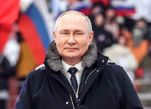
V. V. Putin
A group of cosmonauts visited the Cosmos Conquerors Park and expressed their good wishes in the guest book:
“From the squadron of F Russian cosmonauts, we wish for continued creative development.”
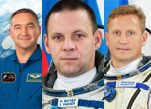
Alexander Skvortsov
Sergey Prokopyev
Wagner I.V.
During his visit to the Space Conquerors Park, pilot-cosmonaut F. Yurchikhin, a Hero of Russia and a representative of the Russian Federation, left a heartfelt message in the feedback book:
“Dear friends, Yuri Alekseyevich inspired us, Soviet boys and girls, with the dream of space! I am grateful to have had a happy childhood.”
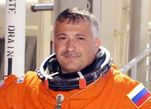
Ph. Yurchikhin
90 years since the birth of the Russian space industry
August 17, 2023 “Even the longest journey begins with the first step.”
Not far from Moscow, in the vicinity of the village of Nakhabino in the Krasnogorsk district of the Moscow Region, there is a unique monument. The monument is well-maintained, with signs of careful restoration, and occasionally flowers can be seen near it. On the metal structure above the concrete base, there is a small rocket. But what is the purpose of this rocket in the middle of a remote forest?
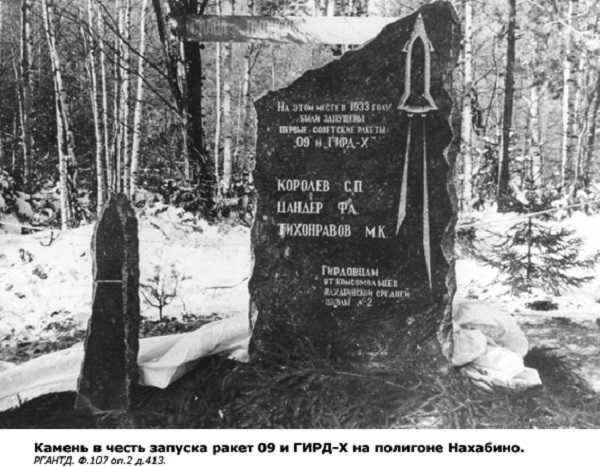
* Who was responsible for the creation of the first Soviet rockets?
In 1931, a youth collective called the Group for the Study of Jet Propulsion (GIRD) was established at the Society for Assistance to Defense, Aviation and Chemical Construction (Osoaviakhim). Leading this group were young inventors and enthusiasts, whose names were not widely known at the time but would later become famous worldwide. These individuals included A.F. Tsander, one of the pioneers of space exploration theory; M.K. Tikhonravov, a Hero of Socialist Labor and rocket technology designer; K. Tikhonravov, another contributor to space exploration theory; Y.A. Pobedonostsev, a scientist who made significant contributions to rocket engineering; and Sergei Pavlovich Korolev, a renowned designer, talented organizer, and the man who paved the way to space for our country.
The work began with the development of the RP-1 rocketplane, which was powered by F. A. Zander’s OR-2 liquid-propellant rocket engine. In April 1932, GIRD received support from the government, allowing them to establish a design office consisting of four teams and production workshops with a team of designers and workers. This enabled them to expand their research efforts, and by the end of the year, GIRD was working on eight complex projects involving rocket engines and vehicles. The members of GIRD were incredibly passionate and dedicated to their work. A testament to their enthusiasm is the fact that Zander would often spend days working on papers, even when his colleagues tried to convince him to go home. He would run away from them and return to his project. In response to this, Korolev issued an order stating that the team leader could only leave the room when Zander left.
During the course of their work, they realized the importance of creating a liquid-propellant rocket with a simple design. The head of GIRD, S. P. Korolev, assigned the development of this project, known as “object 09,” to the leader of the second team, M. K. Tikhonravov.
*What was the outcome of this challenging creative endeavor?
On August 17, 1933, the fruits of their labor finally paid off. After numerous failed attempts, the GIRD-09 rocket successfully made its maiden flight, powered by a liquid engine.
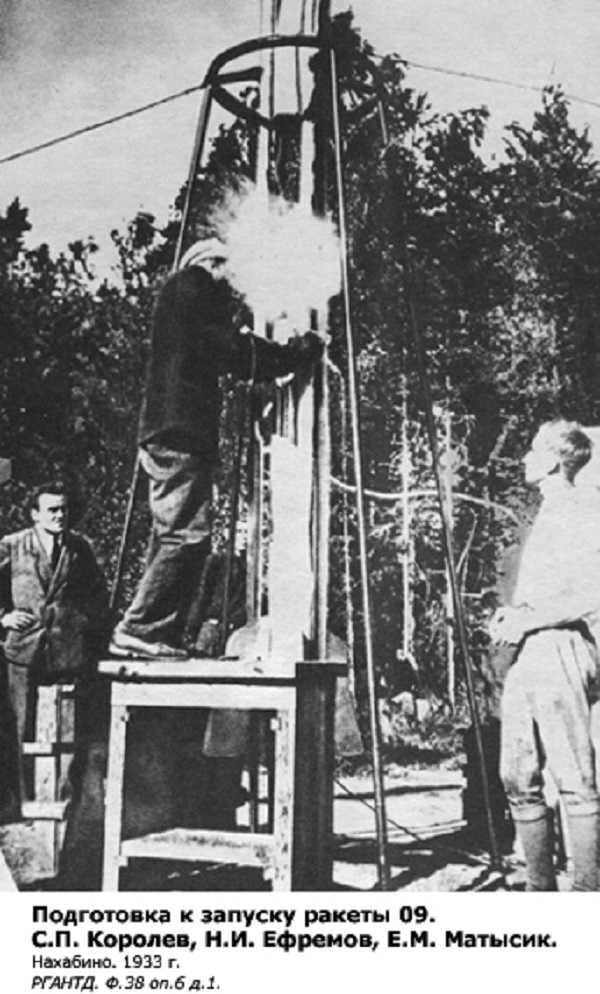
The rocket’s fuel consisted of a substance called “solid gasoline,” which was a mixture of rosin and gasoline created by GIRD workers. As for the oxidizer, liquid oxygen was used. The fuel was directly loaded into the engine chamber, while the oxidizer tank naturally became supercharged. This occurred through the vaporization of the liquid oxygen, creating an overpressure that pushed it from the tank into the combustion chamber. Although the entire flight lasted a mere 13 seconds and the rocket only reached a height of 400-500 meters, this groundbreaking achievement proved that liquid-propellant rockets were indeed feasible!
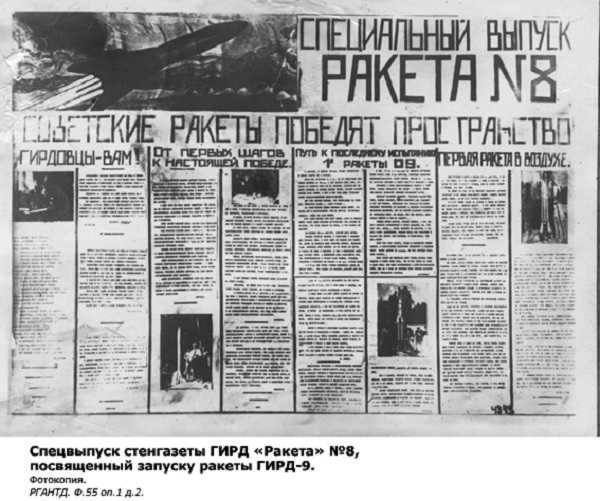
In autumn of that year, the GIRD-X rocket, a completely liquid-fueled rocket with dual tanks, took flight into the heavens. Its propellant consisted of alcohol and liquid oxygen – the very same fuel ingredients that would later propel the “authentic” R-1 ballistic missile into the atmosphere.
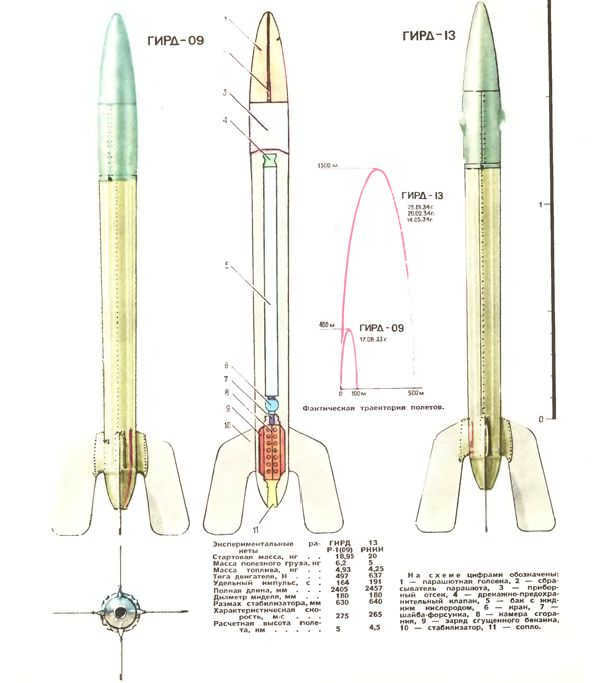
After that, the initial Soviet intercontinental missile R-7 would be put into active service, and the same missile would initiate the space era by successfully launching the first satellite into Earth’s orbit.
*What made this event so significant?
The momentous flight on August 17, 1933 marked the inception of a new branch of mechanical engineering in the USSR. As a result, a replica of the first creation of Soviet rocketry, meticulously reconstructed based on the surviving GIRD blueprints, now rightfully holds a prominent place in numerous museums across the country.
The history of GIRD is truly remarkable. We highly recommend that you familiarize yourself with reading materials. The book provides a detailed account of the fascinating history of the early days of rocket science in our country, specifically highlighting the activities of GIRD:
1. Yaroslav Golovanov. "The Road to the Cosmodrome. Dream. Experience. Case." Moscow, Children's Literature, 1982.
2. K. Tikhonravov. "From the history of the creation of the first Soviet liquid fuel rockets."
Poletaeva Svetlana Vasilievna, excursion organizer.
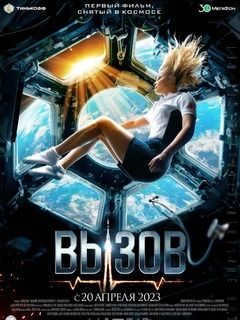
The film “Challenge” is an upcoming Russian movie about space directed by Klim Shipenko, known for his works “Text” and “Holop”, and starring Yulia Peresild.
Storyline
The protagonist is one of the pioneering female astronauts embarking on a mission to the space station.
“In the story, one of the astronauts sustains a chest injury that makes it impossible to return to Earth. With only a month left to live, a decision is made to perform an operation on the station. And the unexpected choice falls on a young woman who never imagined herself in space,” said Konstantin Ernst, the CEO of Channel One.
During the filming process, a significant portion of the scenes were shot aboard the International Space Station. "The Challenge" holds the distinction of being the first film in world cinema history to be filmed in space, specifically 400 kilometers away from Earth. Initially, this groundbreaking project was supposed to be a science fiction movie called "Tavro Cassandra", starring Vladimir Steklov in the lead role. In preparation for his role, the actor underwent several months of training at the Cosmonaut Training Center and was even included in the crew of the "Soyuz TM-30" spacecraft, which was planned to embark on a flight to the "Mir" space station. Unfortunately, due to insufficient funding, the actor was ultimately removed from the team, leading to the suspension of the film’s production.
The film is being produced by the film studio Yellow, Black and White, known for such movies as “Kitchen in Paris”, “The Last Bogatyr”, “Super Beavers”, “Tobol”, and “Hotel Belgrade”. The State Corporation “Roscosmos”, Channel One, and online movie theater START are also involved in the creation of the film. The distribution of the movie is being handled by the company “Central Partnership”, which is a part of the holding company “Gazprom-Media”.
Representatives of Roscosmos believe that this film will help popularize Russian space activities and celebrate the profession of cosmonauts.
The director’s seat is currently filled by Klim Shipenko, a two-time recipient of the prestigious “Golden Eagle” award in the “Best Film” category for his works “Text” and “Salyut-7”. He embarked on a journey to the International Space Station alongside Julia Peresild, the lead actress in his film. Accompanying them was cosmonaut Anton Shkaplerov.
"Shooting in outer space has turned into a remarkable endeavor for Klim and myself. There was no previous experience to rely on. This is a one-of-a-kind situation where each frame, scene, and mise-en-scene is being crafted for the very first time. On one hand, it is not an easy task, but on the other hand, it is incredibly fascinating. We have embarked on a challenging and risky journey together, learning to understand each other with just a glance," – Yulia Peresild expressed her thoughts on the filming process.
"It is a great privilege for me to be involved in the "Challenge" project. Not only is this the first-ever film to be produced in outer space, but it is also an extraordinary masterpiece that will leave a lasting mark in history. Furthermore, the accomplishments of my fellow colleagues are truly astounding, and the project’s creators are not only my close friends but also a team with whom I have collaborated on previous successful and adored films such as "Holop", "I Want to Marry", "Hotel Belgrade", and "Without Borders". However, what truly captivates me about "The Challenge" is its captivating storyline, which would be fascinating even if it were not shot in space. This movie delves into the depths of human experience, showcasing the indomitable spirit of triumph and personal growth, and, of course, it explores the complexities of love," expressed Milos Bikovich.
"The last phase of filming is always filled with adrenaline and excitement. The countdown is measured in seconds. It feels like being in space. We completed the filming at Baikonur. This location holds great significance for us: it is where we departed from, it is where we spent three weeks preparing beforehand. Although I had visited Baikonur before the space flight, it is only now that we have truly forged a strong connection with this place. Here, we experienced intense emotions – excitement, anticipation, and expectation," said director Klim Shipenko.
Interesting trivia
During the pre-production stage, it was announced that the lead role in the project would be played by a woman chosen through a nationwide open competition. Candidates were evaluated based on a “self-test” consisting of a video-recorded monologue. After the first round of the competition, approximately 30 women between the ages of 25 and 45, measuring 150-180 centimeters in height and weighing between 50-75 kilograms, were selected. Each candidate had to undergo a comprehensive medical examination to assess their physical and psychological well-being. The successful candidates then attended a three-month preparatory course at the Cosmonaut Training School. Ultimately, two women – the lead actress and her understudy – would advance to the final round of the competition.
“If you ask young people in our country, regardless of their profession or gender, you will discover that a majority of them have had the desire to go into space at some point in their lives. Many still hold onto this dream. Personally, I have always fantasized about being in space myself or assisting someone else in achieving this feat. Then one day, Dmitry Rogozin contacted me and presented me with the amazing opportunity to make this dream a reality. Roscosmos, being dedicated to its professional duties and the development of new space programs, decided to train two cosmonaut-researchers. One of them would have the chance to go into space and film a feature movie called “Challenge”. We are primarily searching for professional actresses, but we are also open to women with acting skills that can rival those of professionals. This is a chance for them to fulfill their most romantic dream and potentially become international stars,” commented producer Konstantin Ernst.
"In this project, our main focus is to showcase not only the bravery and exceptional expertise of astronauts and industry professionals responsible for ensuring the safety of manned space flights, but also to explore the potential for expedited training for such missions and the inclusion of specialists (such as engineers, doctors, and astrophysicists) who may be unexpectedly required onboard the International Space Station (ISS). This project serves as a unique opportunity for conducting space experiments. The selected actress, chosen through a competition and medical evaluation process, will have the responsibility of fulfilling the role of a cosmonaut-researcher and becoming an integral part of the crew," stated Dmitry Rogozin, the Director General of Roscosmos.
The former participant of the reality show on TNT channel “House-2” Alena Vodonaeva expressed her desire to participate in the project. She announced this on her social media accounts. Another star interested in the project is Zoya Berber, known for her roles in the series “Real Patsans” and “Project Anna Nikolaevna”.
The film “Challenge” has been watched by over 6 million people during its theatrical release.
On September 1, 2023, the highly anticipated digital premiere of the film took place. It was streamed on the online cinema START. Viewers had the opportunity to watch the movie with surround sound and in 4K quality. Additionally, an eight-part documentary about the behind-the-scenes of the film was released online.
In the summer of 2023, Konstantin Ernst, Yulia Peresild, and Klim Shipenko were honored with the prestigious Russian State Prize for their remarkable contributions to the world of cinema. During the awards ceremony, it was emphasized that they had created an unparalleled cinematic event.
Film crew
- Director: Klim Shipenko
- Screenwriters: Klim Shipenko, Bakur Bakuradze, Ivan Zamorov, Nailia Malakhova
- General Producers: Konstantin Ernst, Eduard Iloyan, Vitaly Shlyappo, Denis Zhalinsky, Sergey Titinkov, Dmitry Rogozin, Alexey Trotsyuk
- Producers: Mikhail Tkachenko, Olga Danova, Natalia Smirnova
- Cameraman: Boris Litovchenko
- Artists: Sergey Tyrin, Victoria Shestakovskaya, Lyubov Egorova

